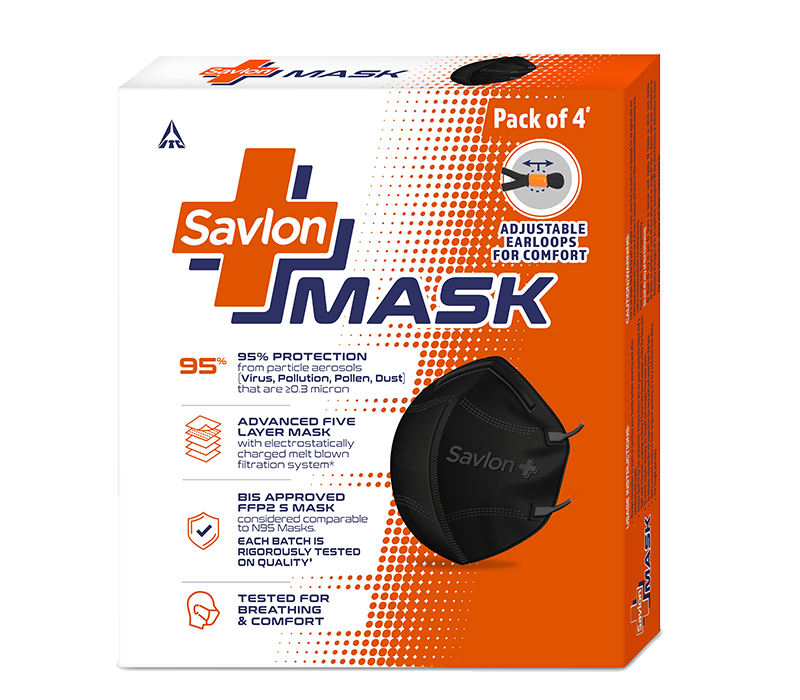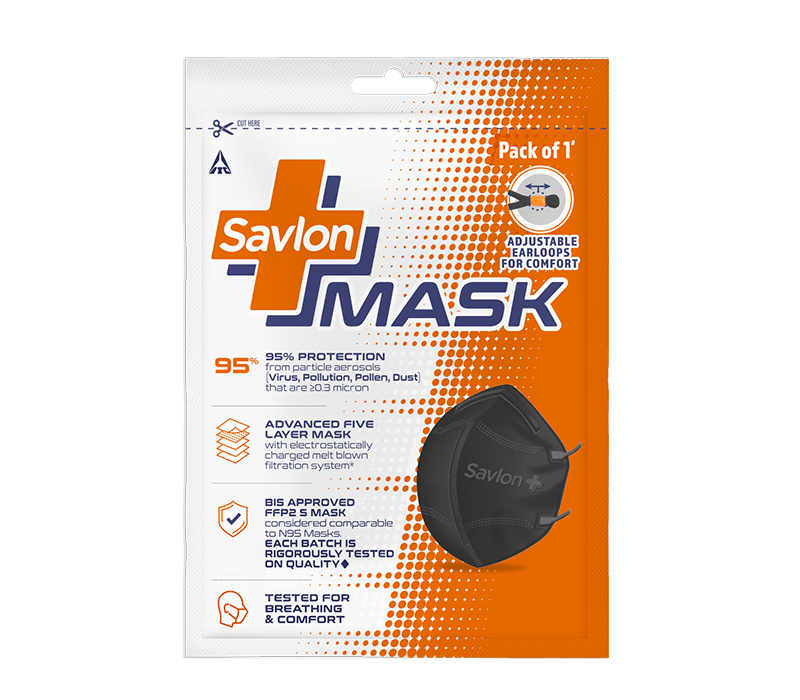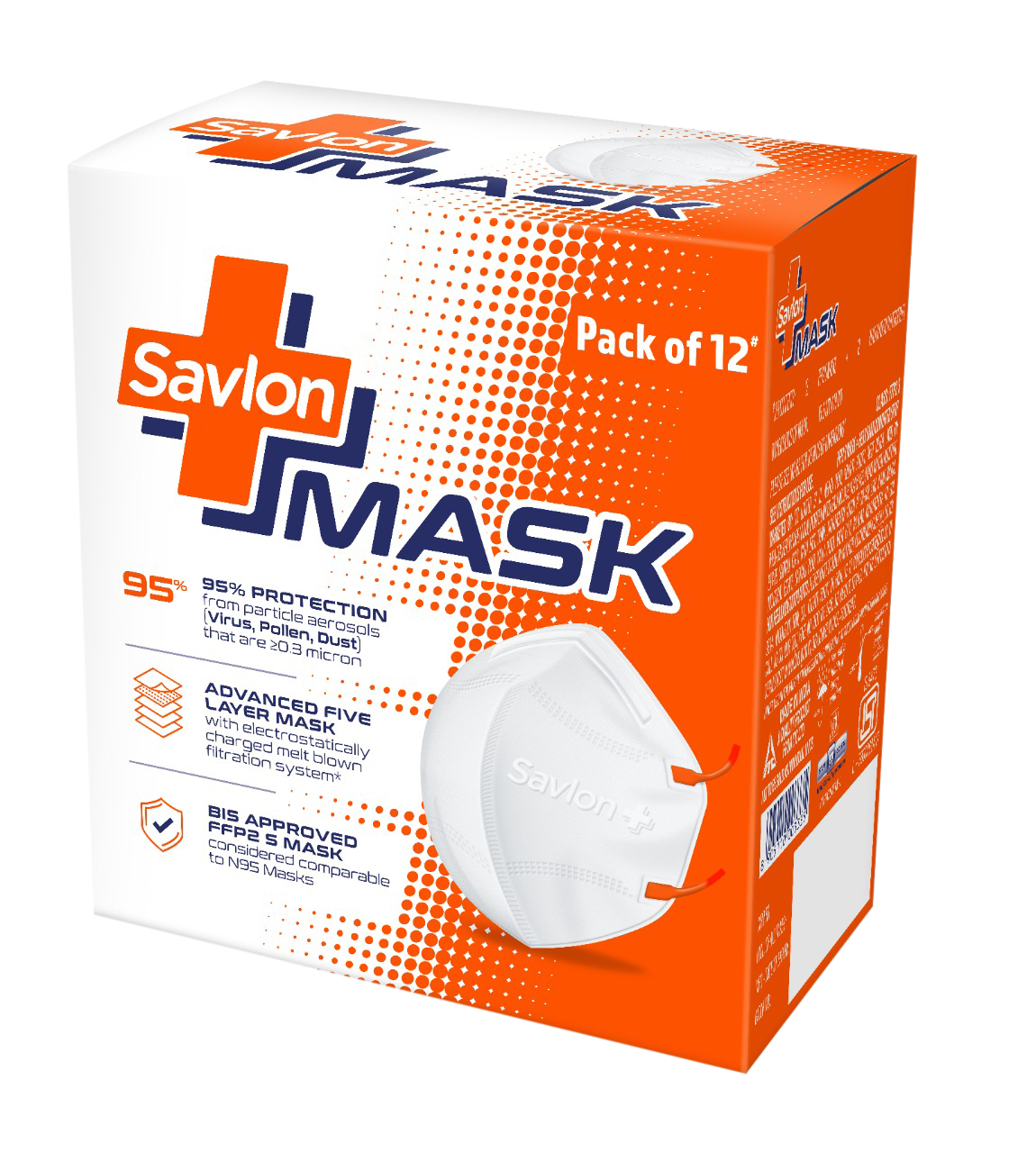Antiseptic Liquid
Protection against 99.99% germs *
Doctors most trusted^
read more
Designed to provide 95% protection from particle aerosols of > -0.3-micron in size including bio-aerosols of virus, pollen and dust with its advanced^ 5 layered construct that has electrostatically charged melt-blown filtration system. This Mask is a Bureau of Indian Standards certified FFP2 S mask, considered comparable to an N95 mask.

95% Filtration: Filters out 95% of particle aerosols that are > -0.3 micron in size (including bio-aerosols of virus, bacteria dust, pollen and allergy causing particles).

5-Layer Protection: One outermost spun-bound layer, One innermost spun-bound layer. Three electrostatically charged melt-blown layers in between the outermost spun-bond layer and the innermost spun-bound layer.
Electrostatically Charged: The electrostatic charging of the filters enhances the ability of the filtration fibers to attract and retain particles.

Certified by BIS: FFP2 classification is the Indian Standard which follows the European Standard (EN-149:1991). The filtration efficacy of the FFP2 masks are considered comparable to that of NIOSH validated N95 respirators

Tested for Breathing, Comfort & Skin-Compatibility: Savlon Masks are tested as per BIS standards so that they do not cause breathing resistance, any itching or irritation to skin and comfortable to wear.



| Dos & Don’ts of Wearing a Mask | |
|---|---|
| 1. Always wash or sanitize your hands before wearing and after removing the masks | 1. Do not touch your face or the outside of your mask once worn. |
| 2. Ensure best fit for full protection. Ensure no gaps along the side and a tight seal is formed. Leakage is likely if facial hair/beard passes under the face seal. | 2 .Do not write on surface of the masks, wash, dry in sun, staple or stitch torn masks. Do not use antiseptics or disinfectants to clean the mask |
| 3. To check fitment of mask, exhale sharply to check that air does not escape from near the nose. | 3. Do not use the mask when soggy or wet. |
| 4. Remember the 3Ds to know when your mask can no longer be used | 4. Do not use the mask in places with poor ventilation or deficiency of oxygen or in an explosive atmosphere |
| 5. Store unused masks in their original packing in a dry and dust free place. | 5. Don't share your mask or borrow used masks |